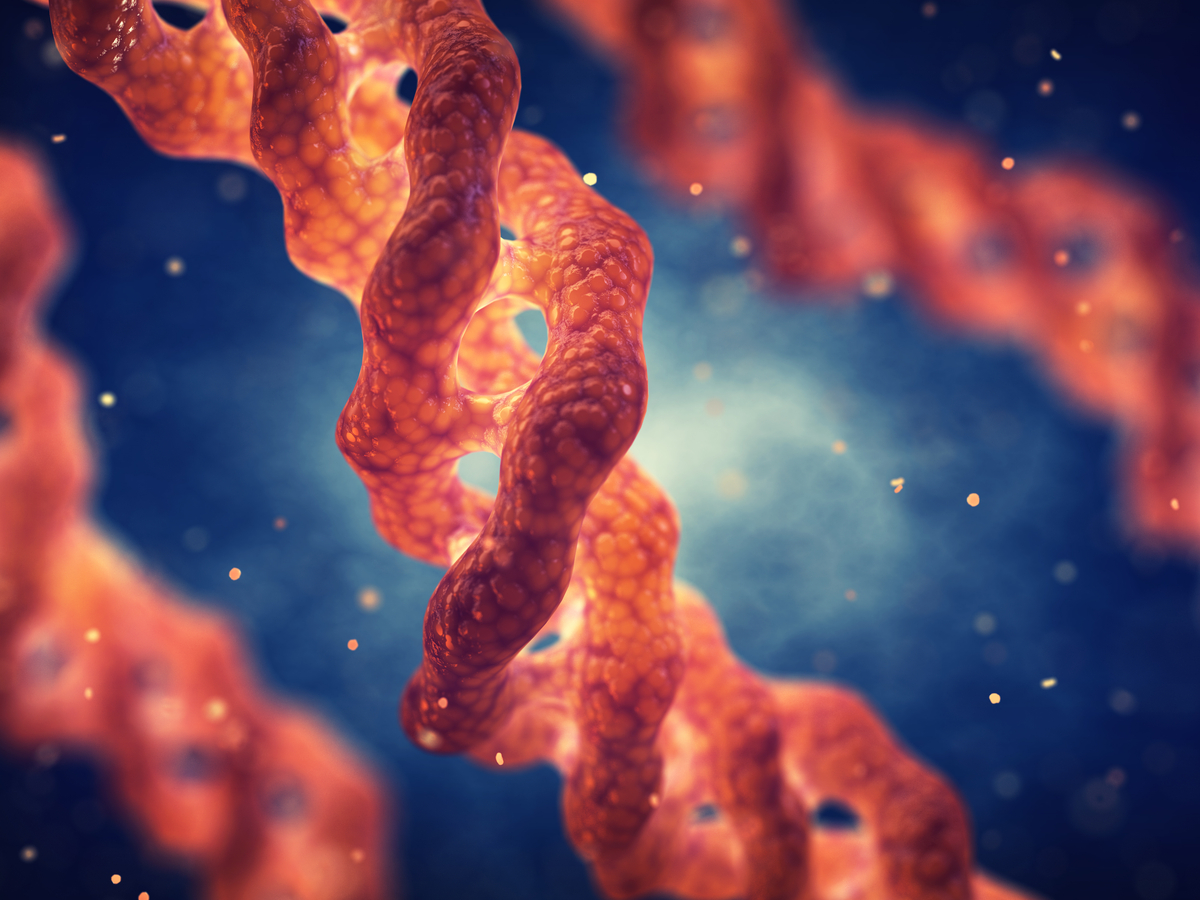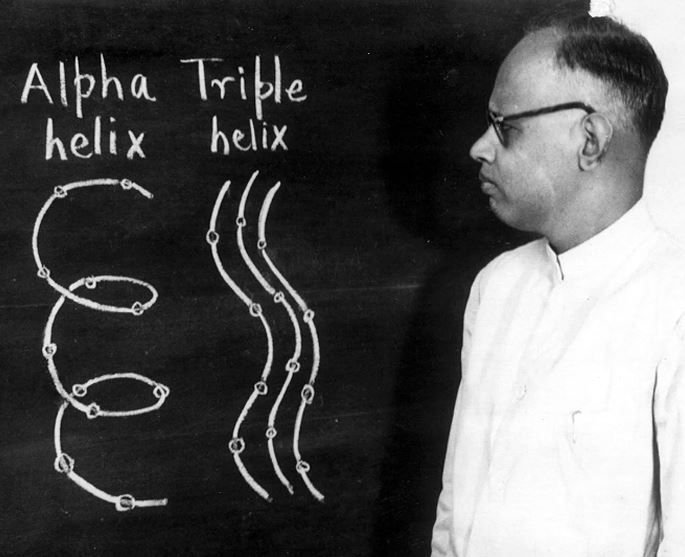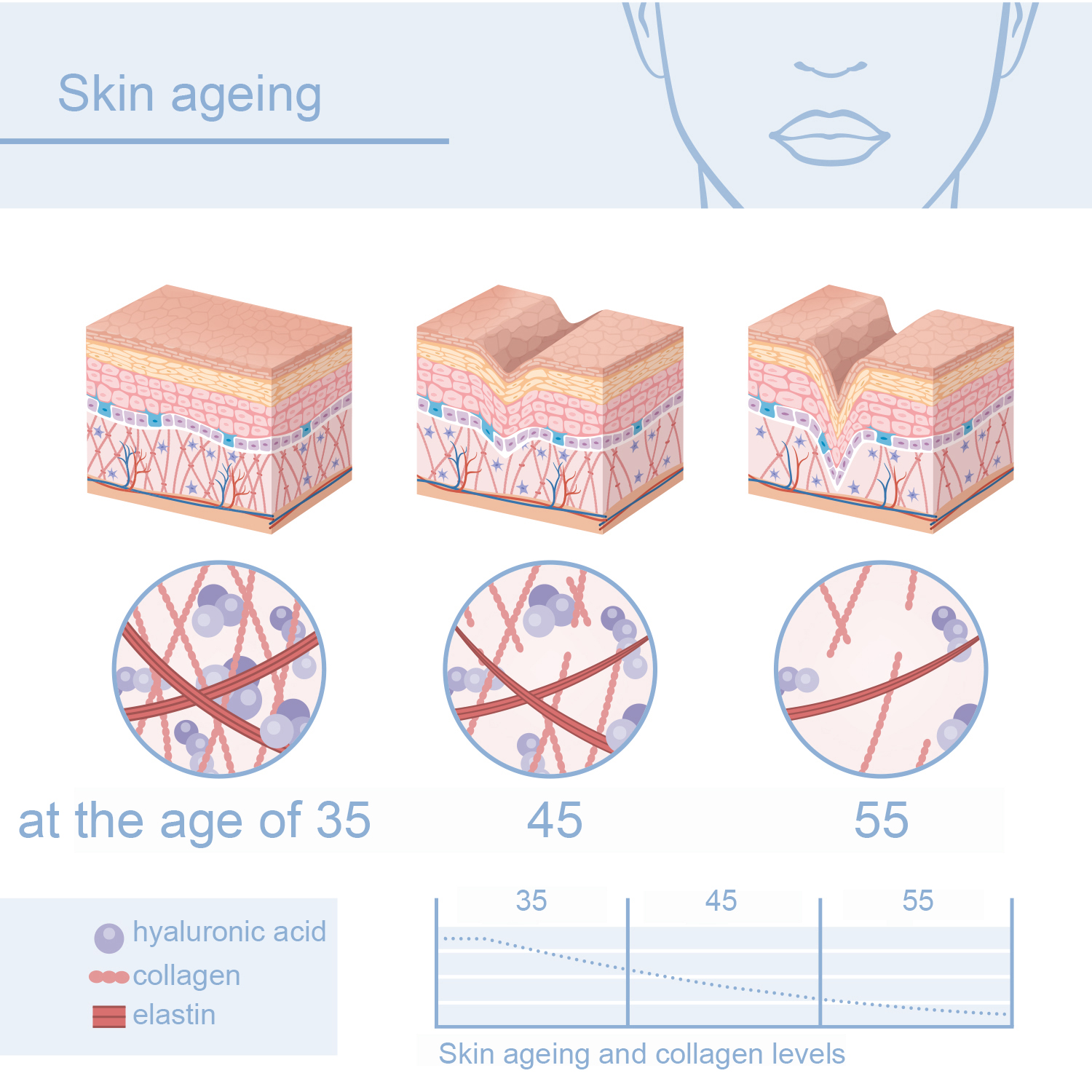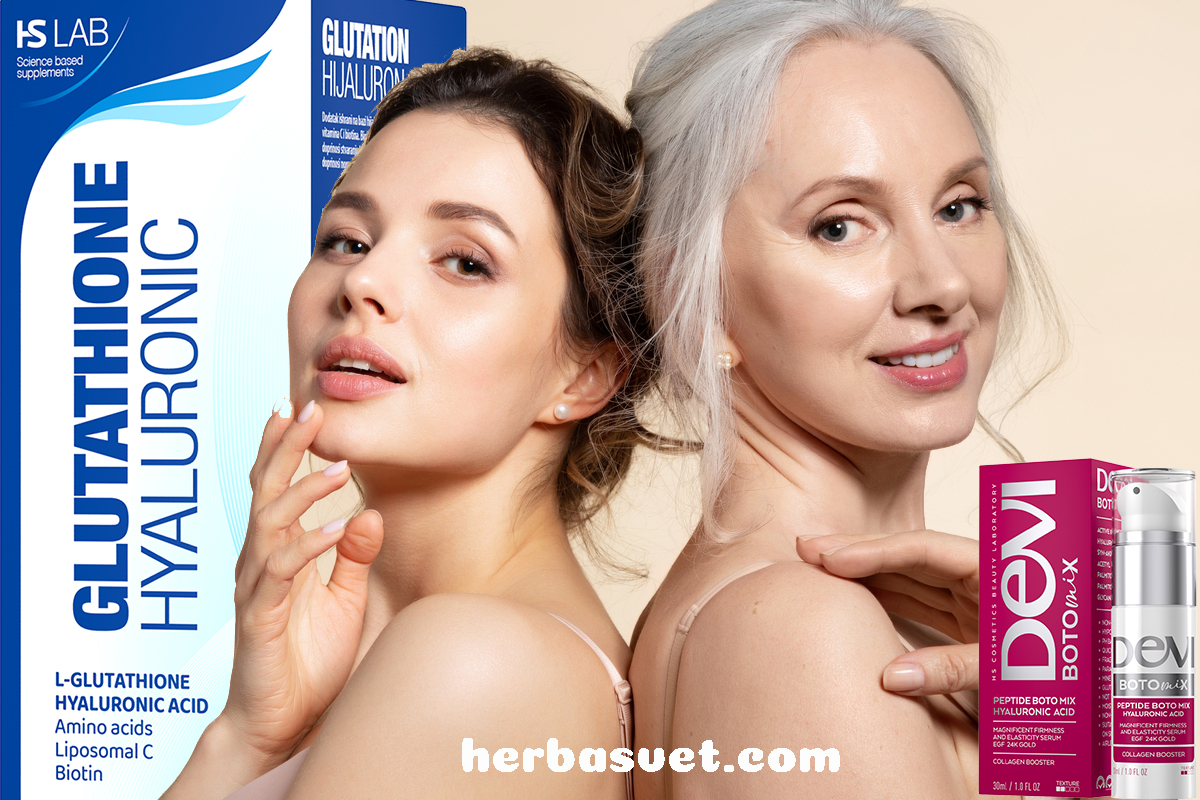While collagen and elastin have become a frequent topic of discussion and we know that they have something to do with the skin, do we really know the mechanisms of their action? And does our skin need care at all or is it better to let “nature take care of everything”? The very fact that our largest organ is the skin means that it is worthy of our full attention and effort, not only when it comes to beauty, but also to our health. Since these two terms are inseparable, with proper skin care and protection, we will not only achieve a brighter complexion, but also good immunity. However, collagen can do much more than just look after our skin.
What is collagen? It is the most abundant protein in our body with a fibrous structure that builds connective tissue. It consists of peptide chains that contain up to a hundred amino acids. It is the backbone of a complex extracellular matrix composed of polysaccharides (hyaluronic acid) and proteins that support fibroblasts, connective tissue cells. The word collagen itself originates from the Greek kolla (κόλλα), which means ‘glue’, and the suffix -gen, which means ‘to produce’, again with its root in Greek (genesis, γένεσις – origin, production, creation). The origin of the word, besides being reflected in the fact that collagen produces connective tissue and bones, is also present in the fact that glue is obtained by boiling bones.

In the 1950s, scientists became interested in the structures of various biomolecules and this is when Watson and Crick discovered the structure of DNA, for which they were awarded the Nobel Prize. However, the scientist who discovered the structure of collagen is not as well known to the general public. His name is Gopalasamudram Narayanan Ramachandran. This committed Indian scientist who studied biomolecules at the Institute of Science in Bangalore in the early 1950’s made the discovery of the collagen triple helix. Ramachandran published his results in the journal Nature; these results were praised and supplemented by Crick himself. His further research led to the so-called Ramachandran plot in 1963, a graph or description of the dihedral angles of the protein base, which is as important in science as Einstein’s Theory of Relativity, and is still used today as a basis for studying protein structures.

TYPES OF COLLAGEN
Today, we distinguish 28 types of collagen, of which four are the most important to us:
- TYPE I is the most abundant and is found in all connective tissues – cartilage, tendons, skin, even in teeth;
- TYPE II is dominant in the joints, i.e. in cartilage and intervertebral discs;
- TYPE III is represented in the network or reticular fibres (reticulin) of blood vessels, which means that it is also present in internal organs and muscles; and
- TYPE IV is present in the cornea, retina and lens of the eye, in the inner ear and kidneys and in the skin.
Collagen in our body is constantly renewed, but with an unequal rhythm: it lasts the longest in the bones, where it is renewed annually, while in internal organs, for example, in the liver, it is renewed every month.
COLLAGEN DECREASES WITH AGE
Although collagen is the most abundant protein in our body, this does not mean that its supply is equally guaranteed throughout our life: its production decreases with age, even before the age of 30; however, it also decreases due to an unhealthy lifestyle, smoking, excessive alcohol consumption, poor nutrition, excessive sun exposure and lack of sleep and exercise. In fact, as we age, a neatly organised network of fibres in the deep layers of the skin turns into a confused labyrinth. Externally, this is reflected in wrinkled and sagging skin, brittle hair and nails; internally, it leads to stiffness and achy joints, weaker muscle mass and poor connective tissue of blood vessels.
Although wrinkles are visible and we often view them with sadness as the end of youth, what can bother us much more and seriously impair the quality of our life are painful joints. When a disorder occurs in the body, for example inflammation, collagen bonds break and we feel pain and swelling. This is felt by every person who suffers from some type of arthritis in which cartilage is damaged. Over the past few decades, scientists have been gaining more insight into the fact that proper supplementation with collagen and hyaluronic acid can significantly alleviate the symptoms of osteoarthritis. Also, collagen supplements can help build muscle mass, which is interesting not only for athletes but also for people whose muscles atrophy due to health problems.
ELASTIN
In addition to collagen, essential elements that build the skin are hyaluronic acid and elastin, another protein that, as its name suggests, contributes to the skin’s elasticity and suppleness. In fact, it is collagen that gives strength and flexibility to tissues, while the role of elastin is to restore stretched structures to their original position. While collagen is a white protein, elastin is yellow. While the body produces collagen to a greater or lesser extent throughout life, elastin is produced mostly in early childhood and we stop creating it after puberty. Without elastin, connective tissues in blood vessels and the skin would not be able to function, so its deficiency can cause disorders such as atherosclerosis and emphysema. They also decrease with age. In women, this process is especially pronounced after the age of 45, because it is accompanied by equally drastic hormonal changes.

COLLAGEN AND THE SKIN
As collagen is found in the deep layers of the skin, applying it externally will not have much effect – collagen fibres are too large to penetrate deep into the skin. In this case it is better to take this protein through supplements as it is more efficiently absorbed in the body and has a more wide-ranging effect.
So why should we not eat collagen? True, collagen is present in food and when our stomach digests it, it is broken down into amino acids that the body distributes as needed. But since collagen is mainly present in red meat, excessive intake of red meat can harm us in other ways, especially when it comes to the cardiovascular system. Bone soup is also rich in collagen, especially when the bones are cooked for a long time, with the addition of vinegar that helps release minerals and collagen. We can also add animal gelatine to our food. However, the amount of collagen that is absorbed in the digestive system in this way can be insignificant, so even if we often eat soup or take gelatine, it will not have much effect.
Also, additional elements that we consume when eating certain foods participate in the process of building collagen – those are primarily vitamins A and C and certain minerals, the most important being copper and zinc. Amino acids are also necessary, especially proline, hydroxyproline, hydroxylysine and glycine. Even if our digestive system absorbed collagen from food perfectly, we could hardly always take in all the elements that support its utilisation. So, is it good to let nature take care of everything?
If we want to help our body and promote the restoration of collagen, it is good to take supplements that contain its building blocks. By renewing collagen, we not only contribute to the youthful appearance of our skin and the flexibility of our joints, but also to the good functioning of our liver, to the prevention of hypertension, diabetes, inflammation and other diseases, including cancer. What is important is to choose quality supplements in the form of collagen building blocks that do not cause allergies, are easily digested and do not lead to an increase of bad cholesterol.
Glutathione hyaluronic was created in the Herba Svet laboratory with this very goal in mind. This top-quality drink based on amino acids – glutathione, L-histidine, L-cysteine, L-glycine and L-proline – hyaluronic acid, vitamin C in the most useful liposomal form and biotin helps build collagen. Using this supplement on a regular basis brings a visible improvement in elasticity, hydration and smoothness of the skin, as well as the quality of hair, nails and joint cartilage. If we want to step up our skin care, there is an extraordinary Devi collection of top-quality cosmetics. Glutathione hyaluronic is an excellent investment in a healthy and active middle and old age!

